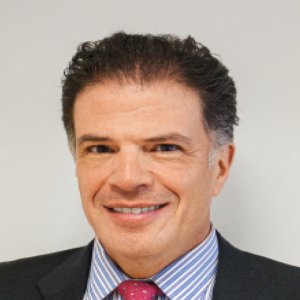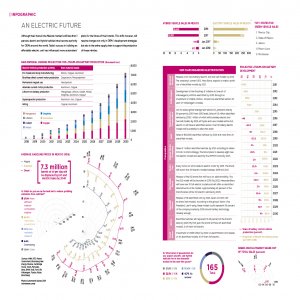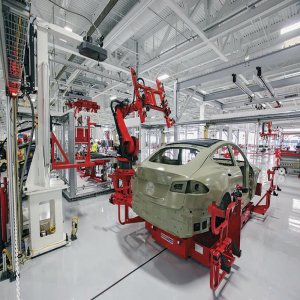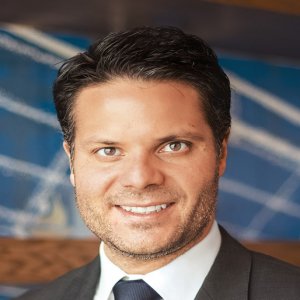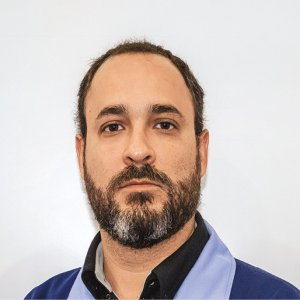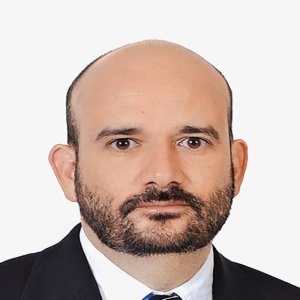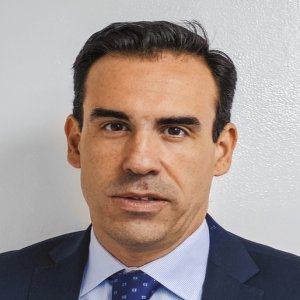Investment, Collaboration for Ongoing Innovation

STORY INLINE POST
Q: After being named Supplier of the Year by GM for the 13th time, how have solutions such as CathoGuard gained ground in the market?
A: BASF creates chemistry for a sustainable future, generating solutions for customers and society through the efficient use of resources. We received this award because we distinguished ourselves through our compliance in performance parameters in terms of quality, execution, innovation and cost reduction. BASF’s Coatings division helped to improve GM’s productivity and environmental performance with its Integrated Paint Process and through the use of the world-class CathoGuard 800 electrocoat. The company has received other awards, including the Supplier of the Year accolade by Mazda Motor Corporation in 2017 for the use of CathoGuard and the iF Design Award in the “Product” category in 2018 thanks to a functional painting system that reduces the temperature on a vehicle’s surface by up to 20°C.
One of our strongest principles is innovation to enable success and CathoGuard was developed as part of that vision. This product family is the perfect example of high-quality corrosion protection and a sustainable solution that helps companies reduce material use and avoid waste. CathoGuard is now one of the most successful products in the market; it fills over 100 tanks on paint lines of automotive manufacturers. BASF is expanding its knowledge of chemical applications and coatings, establishing its position as the leader in the surface-treatment sector. We are also leaning on the acquisition of Chemetall, a company expert in surface treatments, to help us offer customers a complete service from substrate to finishing applications.
Q: How is BASF ensuring a healthy innovation strategy to remain a leader in its business segment?
A: We want to challenge our own product portfolio to ensure increased sustainability and we strive for our innovations to be accelerators in the market. This is a clear strategy that represents an investment of €1.5 billion (US$1.7 billion) annually in research activities. In 2016, 47 percent of our solutions had a positive sustainability impact and that figure grew to 56 percent in 2017. Our expectation is to keep transforming our portfolio, which in turn will also help us boost our accelerator rate, which now comprises 13,000 products in all industrial sectors we cover.
The company’s long-term success, however, requires an alignment of our creative spirit with the market’s actual needs. We have driven innovators in the company but it is not always easy to be disruptive without compromising the actual implementation of the solution due to an extremely high investment. Sometimes, instead of disruption you have to strive for gradual modifications. This is a constant struggle but we have an optimistic view because otherwise, we could not bring change to the industry.
Q: The company continues with a strong inorganic growth strategy exemplified by its recent acquisitions. How is that strategy impacting the coatings division?
A: Although BASF has strong technical capabilities, at times we have to evaluate if it is best to innovate by ourselves or if there is a company in the market that has something unique and that could add value to BASF’s portfolio. Chemetall, for example, was a strategic acquisition that gave us know-how in an area where we had no previous experience. This venture helped us improve our services and solutions, offering an integral solution for companies that we had not targeted yet.
BASF is also collaborating with Swiss company Thermission in lightweighting applications using zinc coatings on metallic substrates. Combining different materials often leads to corrosion, which is common in iron-aluminum mixes. Companies, therefore, need a better corrosion protection strategy and Thermission offers a unique zinc-based solution that could help to reduce problems. Through the combination of BASF’s CathoGuard electroplating process with Thermission’s Zinc Thermal Diffusion process, we can now provide an advanced anticorrosive protection solution for metallic structural components.
Q: In which technologies does BASF see the biggest opportunity to drive innovation and contribute to lightweighting and electrification in the automotive sector?
A: BASF has set ambitious objectives to remain ahead of all other chemical companies worldwide. As the market leader, we are one of the few companies that can support the automotive industry’s ongoing innovation efforts. We are passionate about surface protection. Whatever technology goes into electric or lightweight components must be protected by paint. Our solutions must also ensure appropriate energy management to help the car heat or cool, especially when there is no internal combustion engine to heat the system. Sound must also be controlled more efficiently to ensure the comfortable operation of a vehicle, as well as lighting to ensure optimal energy consumption.
Color, too, will maintain a high level of importance, considering that is what helps truly individualize a vehicle. Our goal, and what helped us win the iF Design Award, is that we blend design with functionality. Taking LiDAR as an example, paint has to be developed in a way that does not block the sensor’s signal to ensure autonomous driving capabilities without compromising aesthetical appeal. Regarding lightweighting, our Performance Materials division has worked for several years to replace metallic substrates with polymeric and composite solutions. Our innovations have provided not only similar results to metallic components but in some cases surpassed the alternatives in terms of stress and endurance.
Q: As a leading German company investing in Mexico, what areas of opportunity have you detected in the local supply chain and how can you help address them?
A: There are already over 2,000 German companies operating in Mexico, generating more than 150,000 jobs, which clearly shows Germany’s belief in the country’s potential as an investment destination. BASF values self-learning and individual training with coworkers as the optimal tools to develop the Mexican workforce. We have created several mentoring and development programs for our employees, training Mexicans outside of Mexico so they can gain international experience, implement it in their everyday activities and share it with their peers. We believe that talent exists in Mexico. We are investing in training for our customers and by the end of 2018 we will re-inaugurate our training center for automotive refinishing in Toluca after a complete renovation.
Q: What opportunities do you see regarding talent and education in Mexico?
A: There is still a gap between the industry’s needs in terms of skills and capabilities and what education systems in Mexico can offer. The dual-education system was implemented in Mexico as a way to cater to the needs of the German industry. Although education plans in Mexico were better compared to other investment destinations, academic institutions did not delivered graduates with the necessary practical experience and the theoretical knowledge that automotive companies needed. Through the dual-education system, companies could train their people in-house, while still being supported by universities and other industrial partners.
Implementing this kind of system entails a risk because highly trained specialists can choose to leave the company but that can happen either way. That is why we must continue developing our people permanently.
Q: How has BASF remained competitive in an uncertain geopolitical environment?
A: Uncertainty is common in all markets and although it is true that NAFTA is putting pressure on the Mexican market, we will have to adapt just like the rest of the industry, whatever may come. BASF has always preferred long-term strategic planning, which means changes in government administrations do not impact us greatly. The company still sees Mexico as an attractive automotive market; we are investing in local companies, such as sealing solution provider Thermotek, one of our recent acquisitions, and we are growing our coating plant in Mexico to increase our waterborne solutions capacity to cater to the local demand for sustainable products.
Q: After the negotiation of NAFTA, what are Mexico’s opportunities to improve its position in the international auto market?
A: Mexico must strive to remain attractive for automotive investment. Investors look for key elements such as talent availability and trade openness to access many markets without tariffs. Infrastructure is also a crucial element to ensure seamless import and export operations and although the country has a strong backbone, there are areas of opportunity to improve this.
Most of the country’s exports go to the US and that has fueled Mexico’s position as a global automotive center. This is positive as long as there is a strong market in the US. However, this dependence also leaves Mexico vulnerable to any fluctuations in the North American market and obstacles such as the current negotiation of NAFTA. Mexico must find a way to be competitive in other markets and strengthen its position as a global manufacturer through cost-competitiveness and higher quality.
